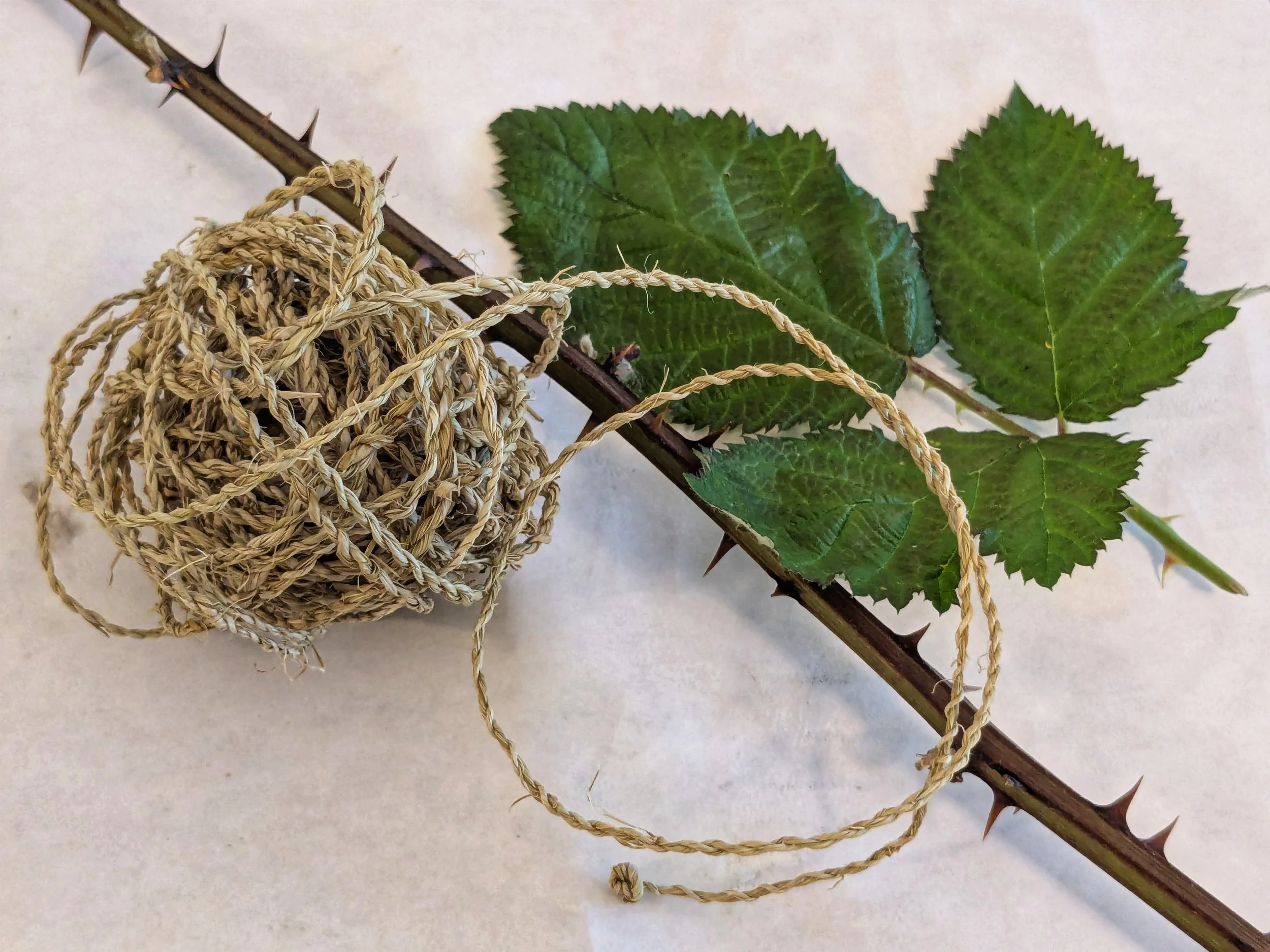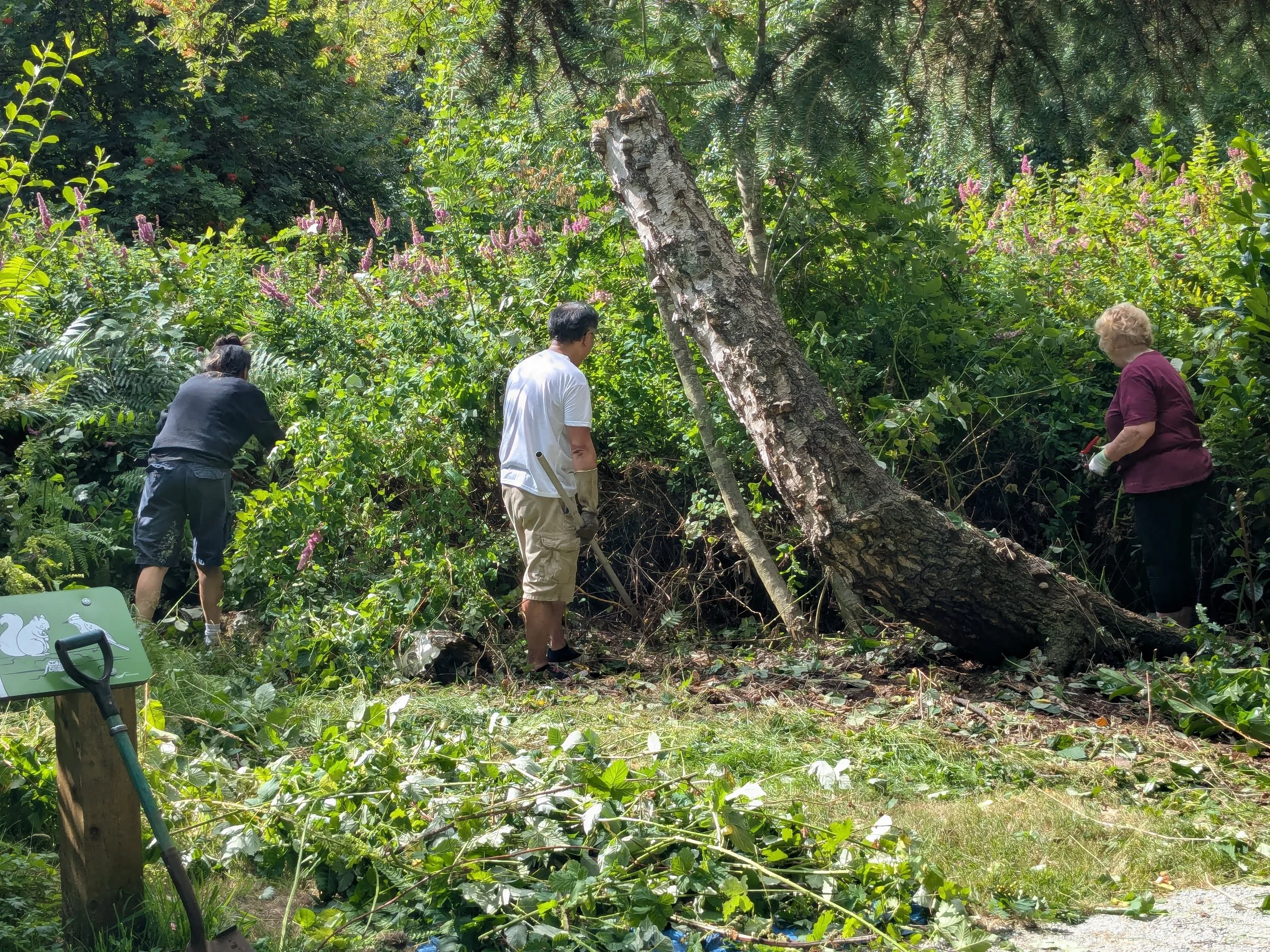We had a lovely weekend working with Richmond Garden Club to remove a bunch of invasive blackberry that had taken over an area of Paulik Park! I work primarily with invasive rather than native plants because native plants are still used by the Indigenous people on whose homelands we live for food, medicines, and in other important cultural practices. By contrast invasives are plentiful and people are always trying to remove and manage them, which clears space for native plants to thrive.
Getting in amongst the thorns- pants and long sleeves are essential!
Richmond Garden Club takes care of the many gardens in Paulik Park, maintaining a little oasis of calm and quiet among the trees. Interestingly, many of these trees were transported as saplings from the North Shore by the Paulik family who settled on this land in the 1930s. The land that became Lulu Island/Richmond was originally a bog ecology rich with sphagnum moss and cranberries, but settlers built dikes and ditches to drain the land and radically changed these ecologies.
During the explosion of settler colonialism and industrialisation in the 1800s and early 1900s, it became very common for people to bring back plants from other lands to plant in their gardens. Paulik Park is a microcosm of that experience, with plants that the family transplanted to the land almost 100 years ago still thriving here, next to trees whose ancestors come from the other side of the Fraser and the Burrard Inlet, among blackberries originally from Iran which are so successful on these lands that they take over any other plant, next to carefully tended native plant gardens intended to preserve the land's original ecologies.
Discovering a tree stump that had been completely enveloped by blackberry!
There's no turning back the clock on the impact of settler colonialism on these ecologies- the bogs are almost all gone, and invasives like blackberry are here to stay, though we can contain and manage them as much as possible. At Paulik Park, Richmond Garden Club has created a vibrant community across cultures, languages, and ages where people are just really excited about gardening and taking care of the land. We were stopped so many times by folks walking in the park who wanted to thank the club for their hard work. It was so lovely to join them for a day and lend a hand in clearing out some space for something that isn't blackberry to grow.
And then of course the work continued, as we gathered the next day at Branscombe House to try and make something with all that blackberry. We stripped the leaves, removed the thorns, and set about pulling long strips of fibre from the canes. After scraping all the green off the fibres, we were left with nice clean ribbons which we set aside to dry. The dried fibres were then ready to twist into a twine. It's slow and meditative work, and for long stretches all that could be heard was focused scraping or the rustling of the fibres while twisting.
Everyone did a great job and each twine had its own 'personality' based on the tension, the tightness of the twists, and the width of the fibres. Some folks were excited to take their twine home to use, while others donated their pieces back to contribute to a bigger net-making project which will kick off at the Maritime Festival in August. Stay tuned to see if we can successfully transform all this blackberry into a net!





